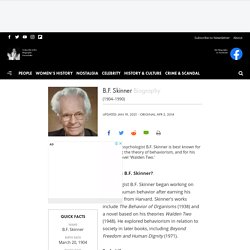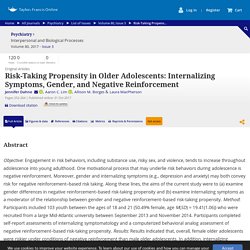

Skinner’s Operant Conditioning: Rewards & Punishments. B.F. Skinner - Theory, Psychology & Facts - Biography. American psychologist B.F.

Skinner is best known for developing the theory of behaviorism, and for his utopian novel 'Walden Two.' Who Was B.F. Skinner? Happy teenager Positive Reinforcement. How to Use Positive Reinforcement for Positive Behaviors. From Positive Reinforcement to Positive Behaviors. Probing teenager Positive Punishment. Positive Punishment: What It Is, Benefits, and Examples. Positive punishment is a form of behavior modification.

In this case, the word “positive” doesn’t refer to something pleasant. Positive punishment is adding something to the mix that will result in an unpleasant consequence. The goal is to decrease the likelihood that the unwanted behavior will happen again in the future. Maintained Behavior Through Positive Punishment.
Sulking teenager Negative Reinforcement. Negative Reinforcement. Negative Reinforcement. Risk-Taking Propensity in Older Adolescents: Internalizing Symptoms, Gender, and Negative Reinforcement: Psychiatry: Vol 80, No 3. Objective: Engagement in risk behaviors, including substance use, risky sex, and violence, tends to increase throughout adolescence into young adulthood.

One motivational process that may underlie risk behaviors during adolescence is negative reinforcement. Moreover, gender and internalizing symptoms (e.g., depression and anxiety) may both convey risk for negative reinforcement–based risk taking. Crying teenager Negative Punishment. What Is Negative Punishment. Effects of Negative Punishment. Four Kinds of Consequences. Effects of Vicarious Punishment.